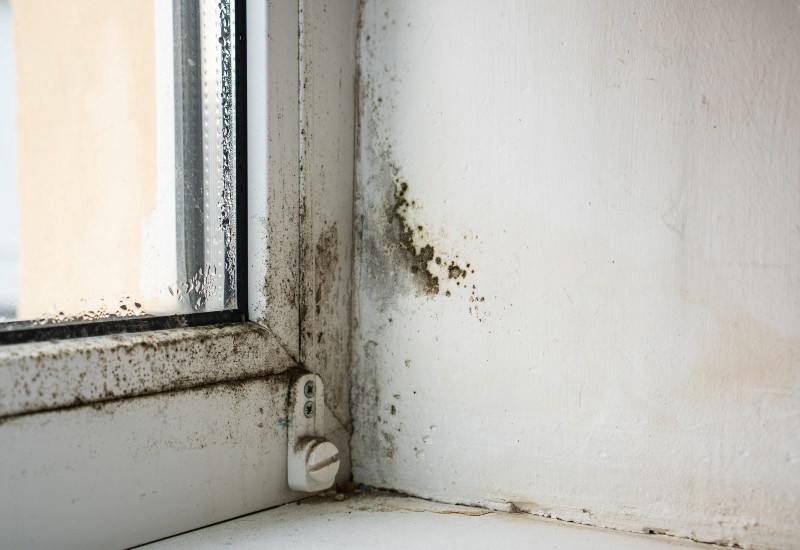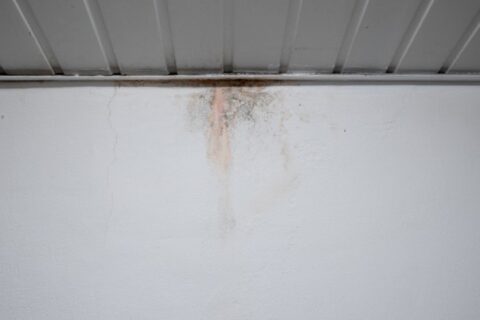What Are The First Signs Of Black Mold In Your Home?

Detecting the early signs of black mold in your home is important for maintaining a safe and healthy living environment. Black mold, scientifically known as Stachybotrys chartarum, is a type of fungus that can cause structural damage to your home and potentially lead to health problems for its inhabitants. In this article we’ll discuss the initial indicators of black mold in your home, helping you to identify and address the issue promptly. By staying informed and vigilant, you can protect your home and health from the potential hazards posed by black mold.
The Musty Odor Of Mold
One of the initial indicators of black mold in your home is a musty odor that fills the air, signaling the invisible presence of mold. This smell is particularly noticeable in areas with high humidity and poor ventilation, such as basements, laundry rooms, and bathrooms. It’s similar to the scent of wet socks or rotten wood and is often more pronounced in confined spaces. When you detect such an odor, it’s advisable to conduct a thorough investigation, checking for hidden mold in damp corners, behind wallpaper, or under carpets. Addressing this odor promptly by identifying and removing the source of the mold can prevent it from becoming a more serious issue.
Hidden Mold
The challenge with mold is that it can hide itself in small, dark spaces, making it hard to detect. Virtually no material in your home is immune to harboring mold growth following exposure to water. Particularly at risk are items like carpets, wooden doors, baseboards, drywall, and wallpaper. Essentially any material that water can penetrate could potentially foster a colony of mold. This underscores the importance of consulting with mold mitigation and restoration experts, such as the professionals at Everdry Waterproofing of Wisconsin, who can accurately identify and remediate mold issues.
Visible Signs Of Mold Growth
Visible mold growth, even if appears insignificant at first, is a clear sign that mold spores have found a friendly environment. These spots may start as small black dots, but can rapidly expand, forming large colonies that mar surfaces and release more spores into the air. Regularly inspecting your home for these signs, especially in moisture-prone areas like shower walls, window sills, and around sinks, is essential. Early detection of visible mold allows for quicker remediation efforts, helping to contain its spread and minimize potential damage.
Water Damage And Mold
Water damage in your home often precedes mold growth, as mold spores thrive in damp conditions. Signs of water damage such as peeling paint, warped floors, or stained ceilings suggest that excess moisture may be hiding in your walls or floors, providing a perfect breeding ground for mold. It’s important to not only repair the source of the water damage but also to inspect the affected area for any signs of mold growth. Timely action can prevent mold from taking hold, protecting your home’s structural integrity and indoor air quality.
Health Symptoms Related To Mold
Health symptoms experienced by inhabitants can be subtle indicators of black mold exposure symptoms such as persistent coughing, sneezing, headaches, or irritation might be dismissed as common allergies, but could indicate a more serious mold problem. Particularly concerning is the impact on individuals with respiratory conditions or compromised immune systems. Who may be more susceptible to the adverse effects of mold spores? If such health issues arise without a clear cause, consider evaluating your home for mold as a potential contributing factor.
Deterioration Of Materials In Wet Areas
Deterioration of grout and caulking in areas exposed to moisture like bathrooms and kitchens can signal underlying mold issues when these materials begin to crumble or become discolored. It often indicates that moisture has penetrated the surface, creating an environment conducive to mold growth. Regular maintenance and inspection of these areas can help detect early signs of mold and enable proper mediation to prevent further spread and damage.
Conclusion
Being proactive about detecting the early signs of black mold in your home is key to preventing its spread and ensuring a healthy living environment. From musty odors and visible growth to unexplained health symptoms and signs of water damage, these indicators serve as a warning to take action. Regular home inspections and addressing moisture issues at their source are effective strategies to combat mold growth. By being vigilant and responsive to these early signs, you can safeguard your home and the well-being of its occupants against the potential threats posed by black mold.
Contact the Experts
Everdry Waterproofing of Wisconsin stands out for its expert waterproofing services, including mold and mildew assessments. Known for our patented technologies and innovative methods, we’ve been solving seepage issues since 1989. Our work comes with a lifetime transferable warranty, ensuring long-term satisfaction and a dry, comfortable basement space.
If you would like more information about the products and services we offer, contact us here.
Ready to Get Started?
Contact Us Today to Schedule a No Pressure, No Obligation, Free Quote!

